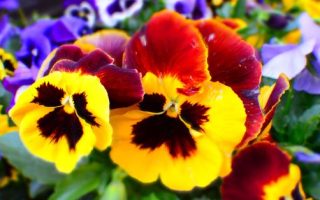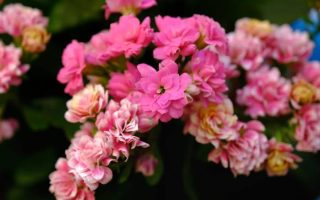marwaarsanios.info – The Spotted Zygopetalum (Zygopetalum maculatum) is a stunning and unique orchid species renowned for its fragrant, boldly patterned flowers. With its captivating spots and rich, vibrant colors, this orchid makes a dramatic statement in any garden or indoor collection. Native to the cloud forests of South America, particularly in Brazil, the Spotted Zygopetalum thrives in humid, warm environments and is highly valued by orchid enthusiasts for its beauty and aromatic fragrance.
Physical Characteristics of Spotted Zygopetalum
The Spotted Zygopetalum is a medium to large-sized orchid, typically growing between 18 and 30 inches in height. Its thick, leathery leaves emerge from a sympodial growth habit, with pseudobulbs (the swollen, storage organs of the plant) at the base. The plant produces flowering stems, known as inflorescences, which arise from the pseudobulbs and can bear up to several blooms at once.
The flowers of the Spotted Zygopetalum are its most striking feature. They display a combination of rich, dark colors—ranging from deep green and purple to bright white or yellow—and are characterized by their intricate patterns of spots and markings. The petals and lip of the flower are adorned with distinctive purple or maroon spots, creating a striking contrast against the lighter background colors. The flower’s lip is often wide and prominent, with a striking shape that further adds to the flower’s exotic appeal. Each blossom has a waxy texture, which adds to its allure and makes it last longer than many other orchids.
The Spotted Zygopetalum is known for its strong, sweet fragrance that emanates from its flowers, with hints of spice and vanilla. The fragrance is particularly intense during the day, making it a delightful addition to any orchid collection, especially those grown indoors.
Growing Conditions and Care
The Spotted Zygopetalum is an epiphytic orchid, meaning it naturally grows on trees and other structures in its native environment, drawing moisture and nutrients from the air. In cultivation, it requires similar conditions to thrive and produce beautiful blooms. It is an excellent choice for both experienced orchid growers and those just beginning to grow orchids.
- Light: The Spotted Zygopetalum thrives in bright, indirect light. Too much direct sunlight can cause the leaves to scorch, while too little light can result in poor growth and fewer blooms. A north- or east-facing window is ideal for growing this orchid indoors.
- Temperature: This orchid species prefers moderate temperatures, typically between 60°F and 80°F (15°C to 27°C) during the day. It requires a drop in temperature at night (about 10°F or 5°C) to simulate the natural conditions of its native environment and promote blooming.
- Humidity: Like most orchids, the Spotted Zygopetalum thrives in high humidity. A humidity level of 50% to 70% is ideal. To maintain proper humidity levels, consider placing a humidity tray beneath the plant or using a room humidifier. Misting the plant lightly can also help, but care should be taken not to over-wet the foliage.
- Watering: The Spotted Zygopetalum needs consistent moisture, but it is essential not to overwater. Water the plant thoroughly when the top inch of the growing medium feels dry to the touch. Use room-temperature water, and be sure to allow any excess water to drain out of the pot to prevent root rot. It is generally better to water the plant less frequently than too often.
- Soil and Potting: This orchid should be planted in a well-draining orchid mix, typically consisting of bark, sphagnum moss, and perlite. The mix should allow air to circulate around the roots, which is crucial for the plant’s health. Repotting is recommended every 1-2 years, ideally after the plant has finished flowering, to refresh the growing medium and provide more room for the roots.
- Fertilization: The Spotted Zygopetalum benefits from regular fertilization during the growing season. Use a balanced, water-soluble orchid fertilizer, diluted to about one-quarter of the recommended strength. Apply the fertilizer every 2-3 weeks while the plant is actively growing and blooming. During the rest period, reduce fertilization or stop altogether.
Flowering and Maintenance
The Spotted Zygopetalum typically blooms in the fall or early winter, with its fragrant flowers lasting for several weeks. Each bloom cycle produces a number of flowers on a single inflorescence, which can continue to flower for several months. The flowers usually open sequentially, ensuring that there are always new blooms on the plant.
After the plant finishes flowering, it may enter a resting period. During this time, reduce watering and fertilization to encourage the plant to rest and prepare for the next flowering cycle. It’s important not to disturb the plant excessively during this period, as it is essential for maintaining its health and encouraging future blooms.
In addition to proper watering, light, and temperature, the Spotted Zygopetalum also requires periodic cleaning to remove dust and debris from its leaves. This can be done by gently wiping the leaves with a soft cloth or sponge, taking care not to damage the plant.
Ecological Role of Spotted Zygopetalum
In its native environment, the Spotted Zygopetalum is an epiphyte that grows on trees in cloud forests, where it benefits from the high humidity, filtered sunlight, and frequent rainfall. By growing on trees, the orchid avoids competition for nutrients from the forest floor and can access abundant moisture and light.
As a cultivated plant, the Spotted Zygopetalum contributes to the health of ecosystems by attracting pollinators such as bees, moths, and hummingbirds. These pollinators are essential to the plant’s reproduction and ensure the continued health of local plant populations.
Varieties and Cultivars
The Spotted Zygopetalum is a single species, but there are several hybrids and cultivars available, often crossbred with other Zygopetalum species or orchids in the same family. These hybrids typically maintain the Spotted Zygopetalum’s characteristic patterns and fragrance while introducing variations in color, size, and growth habit. Some hybrids include:
- Zygopetalum ‘Blue Heaven’: A hybrid with blue-toned flowers that retain the distinctive spots of the Spotted Zygopetalum.
- Zygopetalum ‘Shady Lady’: A hybrid known for its larger flowers and beautiful contrast of purple spots against a pale green background.
- Zygopetalum ‘Dreamcatcher’: A cultivar with dramatic, darker purple and green flowers, providing a more intense color palette.
Uses in Landscaping and Decoration
The Spotted Zygopetalum is an excellent choice for both indoor and outdoor orchid gardens. It can be grown in hanging baskets, pots, or mounted on trees if conditions allow. Its fragrant flowers make it particularly well-suited for indoor spaces, where it can fill the room with its sweet scent. It also makes a beautiful addition to shaded patios or conservatories.
This orchid can be grown outdoors in warm, tropical or subtropical climates, where it benefits from high humidity and shaded spots. When planted in an outdoor orchid garden, the Spotted Zygopetalum pairs well with other orchids or tropical plants that thrive in similar conditions.
Conclusion
The Spotted Zygopetalum is a stunning orchid known for its exotic, bold flowers and aromatic fragrance. With its distinctive spots, wide lip, and waxy texture, it stands out in any collection of orchids. Though it requires specific growing conditions, it rewards gardeners with beautiful, long-lasting blooms and adds an air of sophistication to both indoor and outdoor settings. Whether you are an orchid enthusiast or new to growing these exquisite plants, the Spotted Zygopetalum is sure to become a prized addition to your garden or home.




